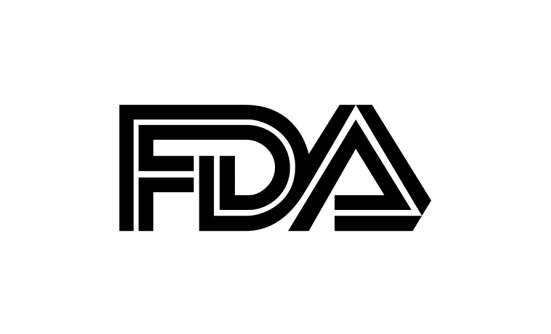Ovarian cancer is among the 3 most common gynecologic cancers, along with cervical and endometrial cancers. According to the American Cancer Society, 1 in 75 women will have ovarian cancer in their lifetime, about 22,280 women will be diagnosed with ovarian cancer, and about 14,240 will die from it in 2016. Ovarian cancer ranks fifth in cancer-related deaths in women, accounting for more deaths than any other cancer of the female reproductive system.
Ovarian cancer is more common in older women; about 50% of women diagnosed are aged 63 years or older. It is also more common in white women than in African-American women. Overall, over the past 20 years, the rate of new cases has been slowly decreasing.
How Ovarian Cancer Grows
In ovarian cancer, cancerous cells develop in the tissues of the ovaries. The ovaries are the glands that produce eggs needed for reproduction; they are also the main source of the female reproductive hormones, estrogen and progesterone, which control sexual development.
More than 30 types of ovarian cancer are known, and they are classified by the type of cells from which they originate. The 3 most common types of ovarian cancer are:
Epithelial tumors, which originate in the epithelium, the tissue that covers the outside surface of the ovary. This type accounts for about 90% of ovarian cancers, and it occurs mainly in women older than 60. This cancer is often diagnosed at an advanced stage.
Germ-cell tumors originate in the germ cells, which are responsible for producing reproductive eggs. It is a rare type, affecting mostly teenagers and women in their 20s.
Stromal tumors start in the supporting tissues of the ovary, where estrogen and progesterone are produced. This is a relatively rare type, occurring mainly in women aged 40 to 60.
Risk Factors
Several factors increase the likelihood of getting epithelial ovarian cancer; these don’t apply to the less common types of ovarian cancer.
Age. The risk for ovarian cancer increases with age, and most cases occur after menopause, with half of all cases occurring at age 63 or later.
Obesity. Being obese (body mass index of at least 30 kg/m2) increases the risk for ovarian cancer.
Reproductive history. Being pregnant and delivering a child before age 26 reduces the risk for ovarian cancer. Women who first deliver a baby after age 35 or who have never had a baby are at increased risk.
Fertility drugs. Using the fertility drug Clomid (clomiphene citrate) for more than 1 year may increase the risk for this cancer.
Androgens. Danazol, a drug that increases androgen levels, also increases the risk for ovarian cancer.
Estrogen and hormone therapy. Using estrogens after menopause increases the risk for ovarian cancer; the risk is higher in women taking estrogen alone (without progesterone) for at least 5 to 10 years. This risk is less certain when taking estrogen with progesterone.
Family history. The risk increases if a first-generation relative (mother, sister, or daughter) has the disease. A family history of other cancers, such as colorectal or breast cancers, can also increase the risk. Some ovarian cancers are associated with a family cancer syndrome caused by inherited mutations (alterations) in certain genes, such as BRCA1 and BRCA2. Having the BRCA2 mutation increases the risk for ovarian cancer by age 70. Other family-inherited cancer syndromes, such as Cowden disease, Lynch syndrome, Peutz-Jeghers syndrome, and MUTYH-associated polyposis, are linked to ovarian cancer risk.
Personal history of breast cancer. The risk for ovarian cancer after breast cancer is highest in women with a family history of breast cancer and a BRCA1 or BRCA2 mutation.
Talcum powder. It has been suggested that talcum powder applied directly to the genital area or on sanitary napkins may cause ovarian cancer.
Common Symptoms
The symptoms of ovarian cancer resemble other conditions, so the disease is often diagnosed late. Symptoms are more likely to manifest when the disease has spread beyond the ovaries, but even early-stage disease has symptoms. A woman who has these symptoms more than 12 times per month should see her gynecologist.
The most common symptoms include bloating; pelvic or abdominal pain; trouble eating or feeling full quickly; urinary symptoms, such as urgency or frequency; fatigue; upset stomach; back pain; pain during sex; constipation; menstrual changes; and abdominal swelling with weight loss.
Diagnosis
The methods used to diagnose ovarian cancer include physical exam; CA-125 blood test; blood tests (human chorionic gonadotropin HCG, alpha-fetoprotein AFP, lactate dehydrogenase LDH tumor markers); radiology imaging, including CT scans, MRI, pelvic/transvaginal ultrasound, PET scan; colonoscopy; and surgical laparoscopy with biopsy.
Prevention Strategies
Oral contraceptives. Using oral contraceptives (birth control pills) is associated with a lower risk for ovarian cancer.
Gynecologic surgery. Tubal ligation and/or hysterectomy may reduce the risk for ovarian cancer.
Diet. Women who follow a diet low in fat and high in vegetables and healthful foods have lower risk for ovarian cancer.
Treatment of Ovarian Cancer
Surgery is the main treatment for most ovarian cancers, with the goal of removing the cancer. This typically involves removing the uterus (hysterectomy) and the ovaries, and removing as much of the tumor as possible (debulking).
Radiation is rarely used as the main treatment for ovarian cancer.
Chemotherapy drugs. The standard chemotherapy for ovarian cancer is to combine a platinum-based drug, such as cisplatin or carboplatin, with a taxane, such as paclitaxel or docetaxel. The typical course of chemotherapy for epithelial ovarian cancer involves 3 to 6 chemotherapy cycles. Chemotherapy drugs used include Abraxane (paclitaxel), Hexalen (altretamine), Xeloda (capecitabine), Cytoxan (cyclophosphamide), VP-16 (etoposide), Gemzar (gemcitabine), Ifex (ifosfamide), Camptosar (irinotecan), Doxil (liposomal doxorubicin), melphalan, Alimta (pemetrexed), Hycamtin (topotecan), and Navelbine (vinorelbine tartrate).
Targeted therapy is a newer type of cancer treatment that uses drugs or other substances to attack cancer cells while doing little damage to normal cells. Avastin (bevacizumab) is a targeted drug that stops or slows the growth of cancer. Avastin was approved in 2014 for use in combination with chemotherapy for recurrent ovarian cancer. Lynparza (olaparib) was approved in late 2014 for advanced ovarian cancer and the BRCA mutation. Lynparza is a PARP inhibitor; by blocking the PARP pathway, Lynparza makes it difficult for tumor cells with a BRCA mutation to repair damaged DNA.
Hormone therapy involves the use of hormones or hormone-blocking drugs to treat the less common ovarian cancer. Drugs that stop estrogen production by the ovaries are called LHRH agonists and include Zoladex (goserelin acetate) and Lupron (leuprolide acetate). Tamoxifen is an anti-estrogen that keeps estrogens from stimulating cancer-cell growth. Aromatase inhibitors are drugs that block the aromatase enzyme from turning other hormones into estrogen in postmenopausal women; these include Femara (letrozole), Arimidex (anastrozole), and Aromasin (exemestane), and they are mainly used in breast cancer but sometimes also for ovarian cancer off-label.
New Drugs on the Horizon
Several drugs are being tested in clinical trials for ovarian cancer. Yondelis (trabectedin) and belotecan have shown promise in some studies; other studies are investigating carboplatin for intraperitoneal chemotherapy. Votrient (pazopanib) is a promising targeted therapy that stops new blood vessels from supplying nutrients for cancer cells. Vintafolide (EC145) is a new drug that targets the folic acid receptor; in one study, vintafolide stopped the growth of ovarian cancer cells that had the folic acid receptor.
A new approach being studied is tumor vaccines that program the immune system to identify and destroy cancer cells. Monoclonal antibodies that attack ovarian cancer cells include farletuzumab, which is directed against the folic acid receptor that is on the surface of some ovarian cancer cells. Catumaxomab is another monoclonal antibody being studied in ovarian cancer.
New treatments are being evaluated every day in clinical trials. To join a clinical trial, speak with your oncology team, or visit www.clinicaltrials.gov, or call 800-303-5691.
Patient Resources
Familial Ovarian Cancer Registry
www.ovariancancer.com
Foundation for Women’s Cancer
www.foundationforwomenscancer.org
National Ovarian Cancer Coalition
www.ovarian.org
Ovarian Cancer National Alliance
www.ovariancancer.org
Ovations for the Cure of Ovarian Cancer
www.ovationsforthecure.org
















